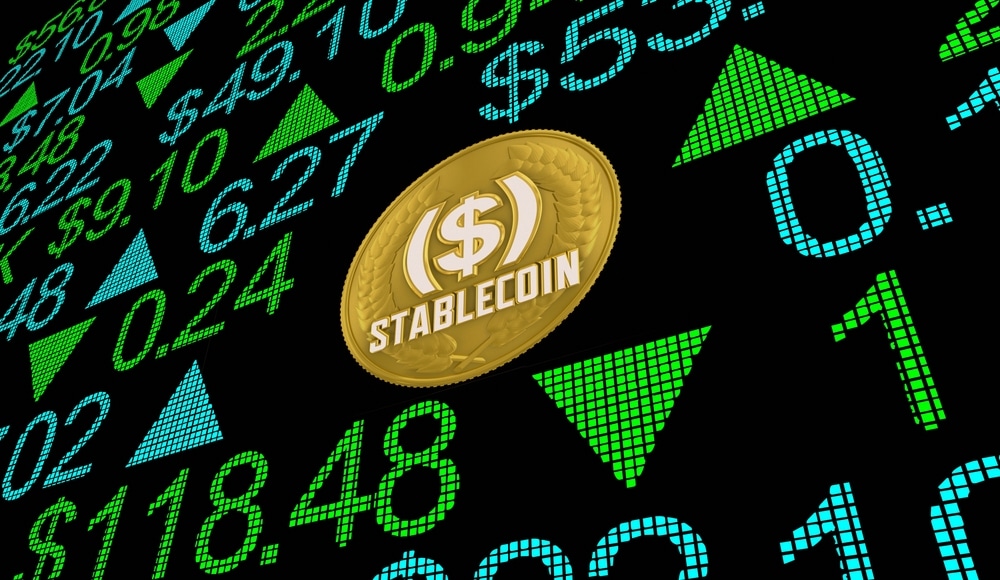
Aave’s GHO Stablecoin Realizes $3.77M Market Cap
The newly launched dollar-pegged stablecoin by Aave is witnessing accelerated adoption. The stablecoin identified as GHO is running on Ethereum. Aave is replicating Maker’s DAI style to back the dollar-pegged stablecoin using overcollateralized loans.
Barely a week since the decentralized finance protocol Aave unveiled the new algorithmic stablecoin GHO, over 3 million coins are circulating. A review of the DeFiLlama statistics shows that the stablecoin has 3.81 million coins, each commanding an exchange value of $0.99, yielding a $3.77 million market capitalization.
GHO Takes Off Following Overwhelming Community’s Approval
GHO stablecoin issuance arose following its approval by holders of the DeFi protocol’s governance token AAVE. The move saw near unanimous approval by the AAVE holders.
The final vote saw 421 wallets, each with a cumulative holding of 881059 AAVE tokens, support the stablecoin launch. A revisit of the vote shows three wallets opposed the issuance. The wallet leading the dissenting had 10 AAVE tokens, while the remaining two owned fractions of the governance token.
The Aave DAO will oversee the GHO governance by undertaking key decisions involving total supply adjustments, setting interest rates, and reassessing the Facilitator minting caps. Also, the Aave DAO will ascertain the risk parameters, approve and govern Facilitators. The Facilitator involves protocol that Aave DAO permits to mint GHO.
GHO to Sustain Overcollateralized Nature Using Multiple Cryptos
The blog post confirmed GHO deploying on the Aave’s V3 market. The minting process requires users to supply other cryptos listed within the Aave V3 as approved to serve as collateral. As such, users can choose from USD Coin (USDC), USDT, ETH, DAI and AAVE.
Scrutiny of GHO stats shows it is overcollateralized considering that the total value of reserves users stake to minting exceeds its circulating units.
The official statement conveyed during the stablecoin launch estimates its AAVe V3’s mining capacity as 100 million. The current supply estimates a meager 3.81% of the total units minted. The post clarified that Aave DAO could adjust the cap through a community vote.
Aave clarified that the collateral deposited within the v3 protocol earns yield. The interest parties pay for borrowing the GHO stablecoins and are directed to the DAO treasury. The post clarified that users supplying the AAVE within the protocol can buy the GHO at a discounted price.
Diversity in Stablecoin’s Reserve Approach
The entry of Aave to unveil GHO into the thriving stablecoin segment is set to stir competition heat upwards.
The segment has the Tether’s issued USDT stablecoin commanding a significant state of the segment. Circle’s USD Coin (USDC) utilizes a similar approach as Tether’s USDT. Both sustain the 1:1 pegging to the dollar.
The USDT and USDC issuers hold reserves in either cash or US Treasury bills under trust within centralized entities such as investment banks.
Maker Foundation runs DAI stablecoin on the Ethereum network. Unlike USDT, it utilizes overcollateralized crypto loans to back its DAI stablecoin.
DAI utilizes USDC as the main crypto backing. Nonetheless, users can utilize Ethereum-based cryptos in minting, such as Ethereum and Wrapped Bitcoin (WBTC).
The decentralized nature of collateral users utilize, and multiple companies’ involvement in managing the protocol that oversees stablecoin makes DAI the decentralized stablecoin.
GHO Comparison with DAI and crvUSD Stablecoins
Unlike GHO, DAI obligates users to deposit $1.94 crypto for each $1. Dynamic smart contracts to manage the DAI issuance compels top-up of the collateral when a sudden ETH price arises. Doing so becomes necessary to avoid the liquidation risk.
Aave unveiled GHO stablecoin two months after DeFi protocol Curve Finance introduced crvUSD. The decentralized protocol introduced the over-collateralized stablecoin in May. The stablecoin runs on Ethereum.
A review of the crvUSD stablecoin shows that 94.91 million units are circulating, each priced at $1. It translates to a $94.85 million market capitalization as per DeFiLlama data.




